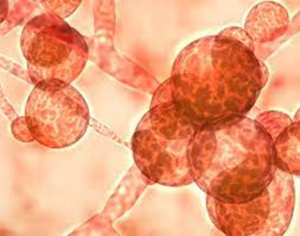Candida auris is a recently identified species of yeast (a type of fungus) from the Candida genus. Most Candida species are harmless commensals, however they can be invasive and cause disease, known as candidiasis.
C. auris was first identified in 2009 and has been associated with prolonged outbreaks in healthcare settings as it is highly transmissible between patients and from contaminated environments. It can cause a wide range of infections, including blood stream infections (candidaemia), pericarditis, urinary tract infections (UTIs) and pneumonia. It is hard to identify with standard laboratory methods and is multi-drug resistant making diagnosis and treatment difficult.
C. auris mainly affects critically unwell patients in high dependency or intensive care settings. Those with severe underlying co-morbidities and immunosuppression, including those with diabetes, chronic kidney disease, malignancies and Human Immunodeficiency Virus (HIV) are most at-risk.
